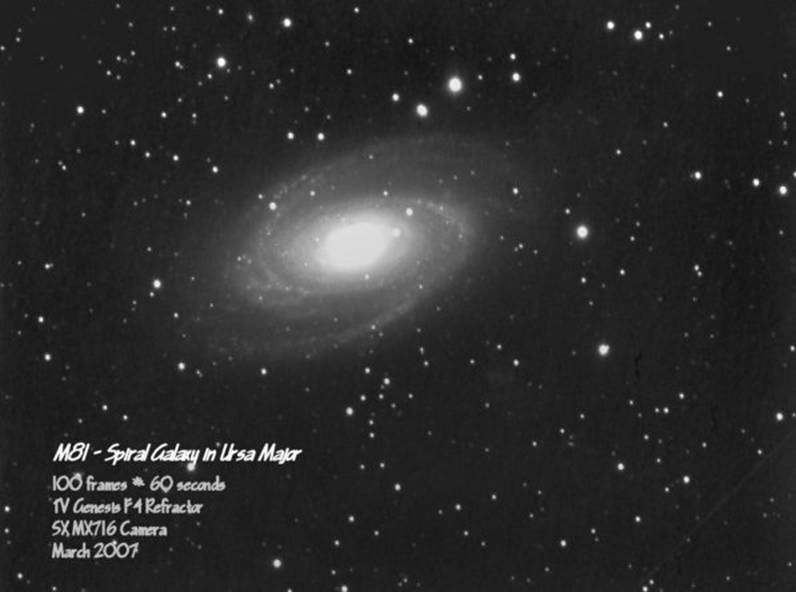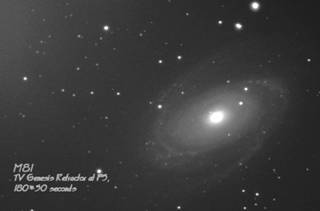


Image of M81, taken last Saturday (March 17, 2007) under wonderfully clear skies....
M81 is a beautiful rotating disk of about 250 Billion stars located near the big dipper, at an estimated distance of 12 million light years. The haze that seems to make up the galaxy is in reality billions and billions of individual stars. Some of the brighter star-like objects may be globular clusters, which are dense clumps of tens of thousands of stars, others are likely foreground stars in our own galaxy. Also note the two faint spiral arms extending out of the disk of the galaxy.
The bright core of the galaxy is easily visible through a small scope or even binoculars on a dark night, the disk should be faintly visible through a medium size amateur telescope. I would be interested to know if anyone out there has managed to see the spiral arms through a small telescope. This image represents the sum of about 100 60 second exposures.
This is also the first image I have taken with my new (or at least, new/used) Starlight Express MX716 AstroCamera (or at least the first one worth sharing with the general public). It is interesting to compare it to the image below taken from my older Atik 2HS camera, shown below. That image shows a sort of “light fog” across the picture, particularly on the upper left. This is mostly due to warm surfaces in the camera emitting “Infra-Red” light (as all warm object do, including ourselves), which is invisible to human eyes but very visible to the CCD chips that form the “heart” of the camera (this despite the fact that the image below was taken when it was only 7 degrees out!). The MX 716 use something called a “Thermoelectric” (or “Peltier”) cooling device which freezes the heart of the camera down to about 55 degrees below the ambient temperature, reducing the heat noise to pretty close to zero. (More about this in the “Extended Directors Cut” of this e-mail, to be published in the University Lowbrow Astronomers club newsletter—Mark?). It is also interesting to note the conventional Digital Cameras have built in IR-blocking filters to block infra-red light emitted by the object being photographed, otherwise we would all appear to glow pink in pictures taken in low light. This does not block IR generated from within the camera, but for the typical short exposures used in conventional photography it’s not really an issue.
